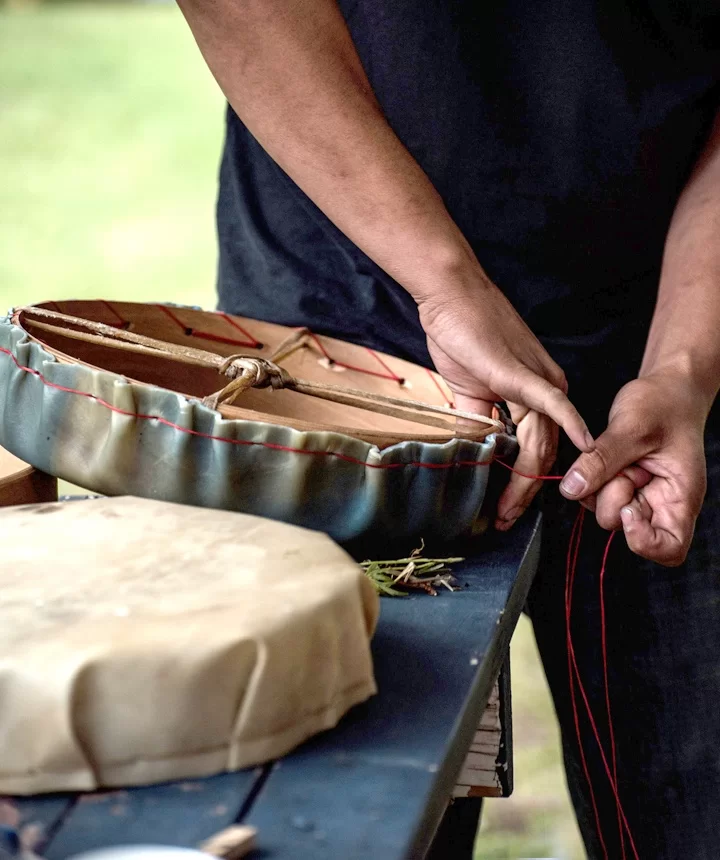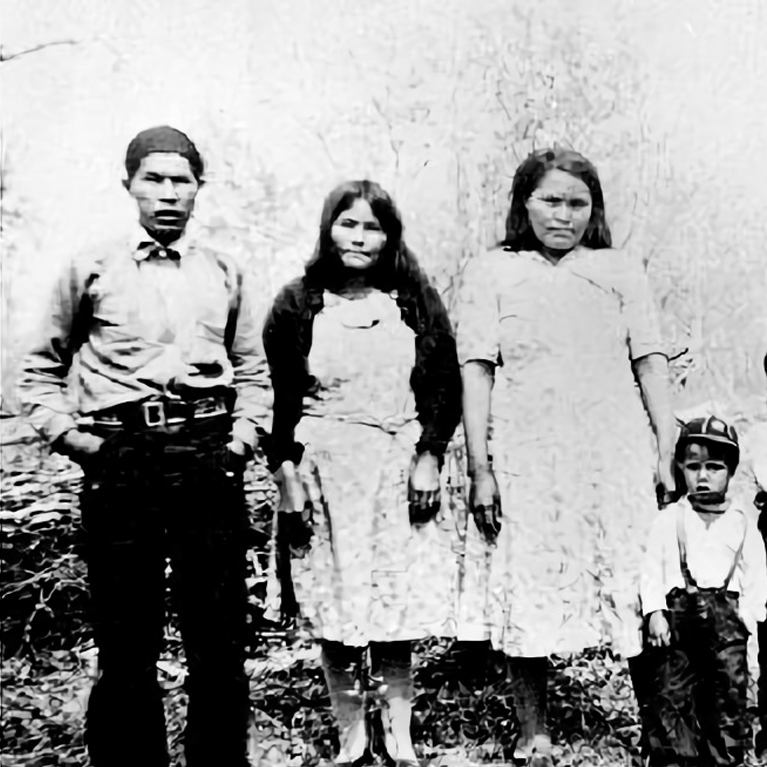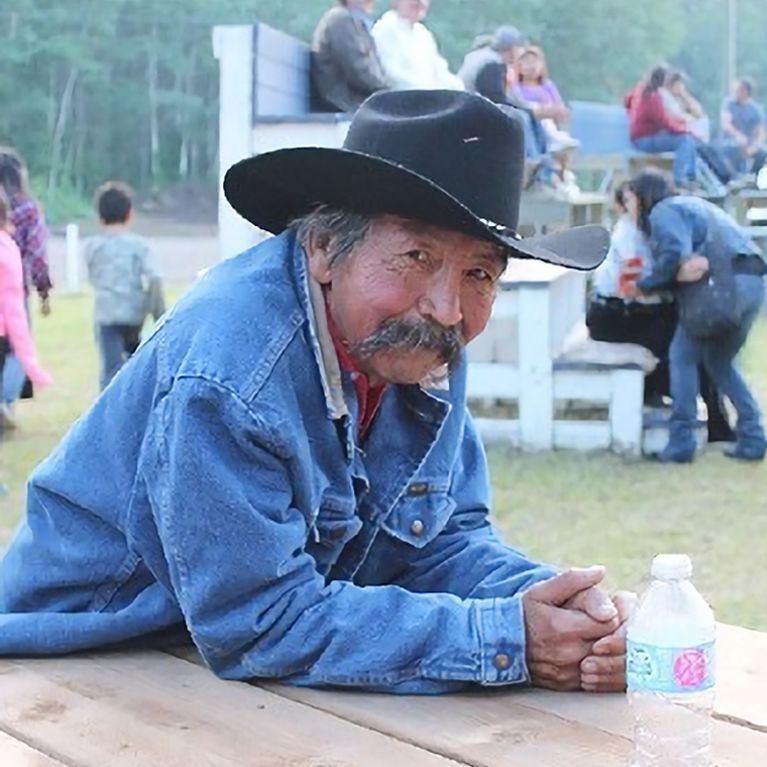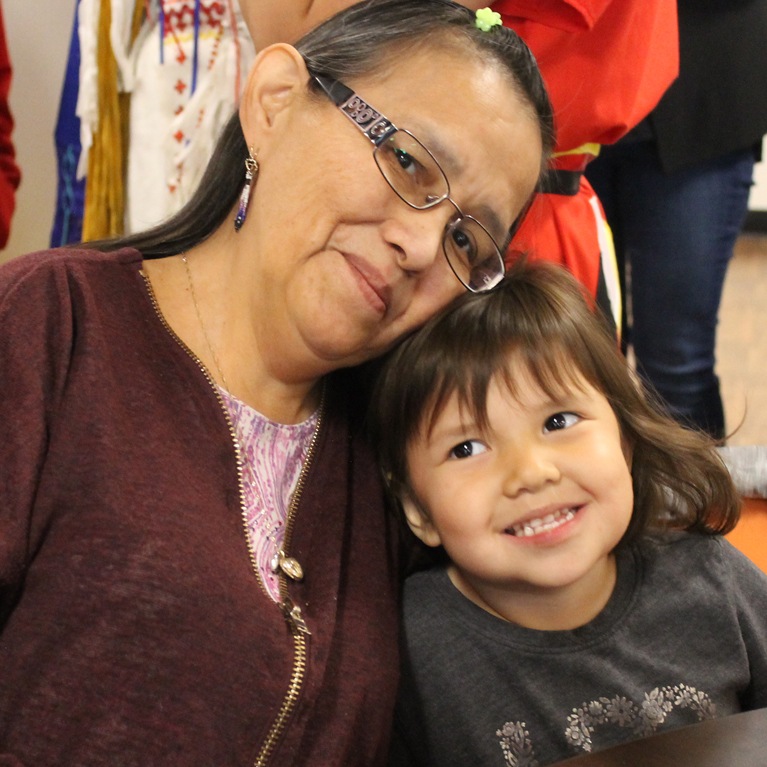Our Story
Saulteau First Nations is a vibrant and diverse mixture of Dunne-Zaa (Beaver), Néhiyawak (Cree), Iyarhe Nakoda (Stoney), Haudenosaunee (Iroquois), and Nahkawē (Saulteau) people. Our current name comes from the French word Saulteurs which means “people of the rapids”. This name refers to a location around the St. Mary’s River (near Sault Ste. Marie, Ontario), where French fur traders first met with our Nahkawē (Saulteau) ancestors.
In the mid 1800’s several influential Nahkawē (Saulteau) leaders received visions, which instructed them to lead our ancestors west toward a sacred place – a lake below the Twin Mountains. It was during their lengthy migration across the prairies, that our Nahkawē (Saulteau) ancestors first met our Néhiyawak (Cree) and Iyarhe Nakoda (Stoney) ancestors. They soon joined forces and continued their westward journey together.
After many years of travelling, they finally arrived at Moberly Lake. Here in the shadow of the Twin Sisters Mountains they were welcomed by our Dunne-Zaa (Beaver) ancestors, who had already been living in the area for millennia.
Our Haudenosaunee (Iroquois) ancestors also travelled a great distance before arriving at Moberly Lake. Their original homeland was in eastern Canada and upstate New York. However, they began working with European and Métis fur traders and travelled west.
In the early 1900’s they were welcomed into our nation. In 1914, the relatives of our present-day members adhered to Treaty No. 8 with the newly formed Government of Canada when they accepted treaty annuities at Moberly Lake.
Today, our members continue to self-identify with a mixture of Dunne-Zaa (Beaver), Néhiyawak (Cree), Iyarhe Nakoda (Stoney), Haudenosaunee (Iroquois), and Nahkawē (Saulteau) customs and beliefs. However, Néhiyawak (Cree) is now the most common Indigenous language spoken by our members.
Our Lands
After our ancestors adhered to Treaty No. 8 in 1914, a reserve was surveyed for our people at the east end of Moberly Lake (IR #169), and formally set aside by the Government of Canada in 1918. Our main community is now located on this reserve; however, as Figure 9 demonstrates on the next page, our Treaty Territory extends well beyond the boundaries of this reserve.
Treaty 8 Territory covers approximately 840,000 square kilometres in what is now northern Alberta, northeastern British Columbia, northwestern Saskatchewan, and the southern-most portion of the Northwest Territories.
SFN is a Treaty 8 Nation, which provides our members with (among other things) the constitutionally protected right to hunt, fish and trap, and to gain a livelihood from the lands and resources within Treaty 8 Territory. Practicing our Treaty Rights provides our people with the means for a rich spiritual, social, and economic life.
The land and the activities carried out upon the land connect our people to their past and provide them with the resources they need to build a healthy, stable, culturally rich future. When our ancestors first adhered to Treaty No. 8 it was understood that the Treaty and our Treaty Rights would be upheld for “... as long as the sun shines, the grass grows and the rivers flow.”






